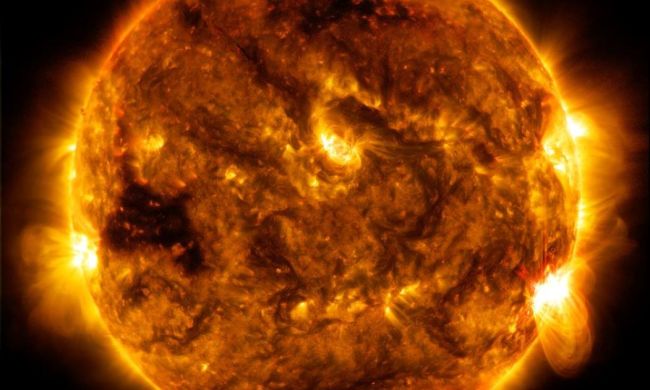Our sun is an ever-changing and dynamic system, and NASA’s Solar Dynamics Observatory recently spotted the largest solar flare seen since 2017.
Periodically, the sun will flash brighter in an event called a solar flare, often accompanied by a huge burst of plasma arcing out from the sun’s surface called a coronal mass ejection. These flares are associated with an increased sunspot activity, in which dark spots appear on the surface of the sun.
While solar flares can be potentially damaging to satellite communications and electrical grids here on Earth, you needn’t worry about this recent flare — it has not passed the threshold set by the U.S. government’s Space Weather Prediction Center which would require an alert.
The flare is of interest though, as it indicates that the sun may be entering a new phase of its cycle.

The sun’s activity varies over an 11-year cycle, during which the number of sunspots and the amount of solar flare activity changes. The sun is thought to currently be in a period of minimal activity, called a solar minimum, and the appearance of this large solar flare could indicate that the solar minimum is coming to an end. That would mark the end of the current solar cycle, designated Solar Cycle 24, and the beginning of Solar Cycle 25.
In order to know whether the solar minimum is actually coming to a close, scientists need to continue monitoring the total number of sunspots appearing on the sun’s surface. But this will take some time, as NASA explains in a blog post: “It takes at least six months of solar observations and sunspot-counting after a minimum to know when it’s occurred. Because that minimum is defined by the lowest number of sunspots in a cycle, scientists need to see the numbers consistently rising before they can determine when exactly they were at the bottom.
“That means solar minimum is an instance only recognizable in hindsight: It could take six to 12 months after the fact to confirm when minimum has actually passed.”



